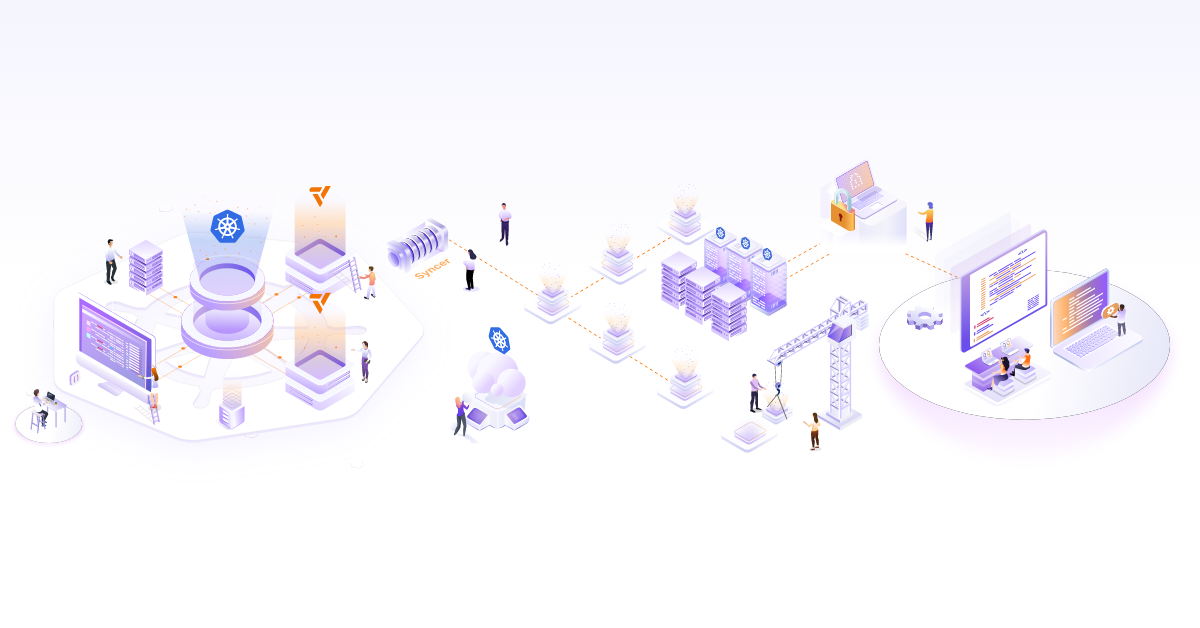
Kubeflow : Scaling ML with Kubernetes

Machine learning(ML) is being adopted by organizations of all sizes but one of the key challenges has been deploying and managing the infrastructure for machine learning workloads. Kubeflow launched in Kubecon US 2017 aims to solve the problem – by running machine learning on Kubernetes as the platform. Ever since the launch of Kubernetes, it is being adapted to different application categories (Check the first section and image from this article).
Developing an ML Solution
A typical machine learning problem goes through phases and multiple iterations based on success/failure rate of any given phase. At a rough level we can imagine the flow to be roughly like:

Data gathering and preparation are the most important parts of this activity. Then comes the crucial portion of choosing a model and then training the data with that model. This phase may involve either fine-tuning the model or choose a completely different model altogether. Once the model is trained and the results are satisfactory, the model needs to be deployed and scaled as needed. The deployment could be to a cloud server or to an edge device depending on use case and operational concern for both cases might be different.
Kubeflow: ML on Kubernetes
One of the key factors, as we mentioned earlier while developing ML solution, is the operational parts of it. For example when training a model – you need to scale the infrastructure so that the training can be finished in a reasonable time. Similarly, once the training is done, you need to deploy, maintain and operate the deployed model. While one can use virtual machines for this, containers are becoming the standard way to package and deploy applications. Similarly, Kubernetes is becoming the defacto standard for managing and orchestrating containers at scale.
Kubeflow builds on Kubernetes as a platform and uses CRDs, controllers & operators (These are some of the ways to extend Kubernetes in a native way, unfortunately, we will have to cover them in a separate blog post). This is explained in detail in the kubeflow job design specification for tensorflow. Kubeflow’s tensorflow operator can use to train model developed using tensorflow, which is one of the most popular machine learning frameworks. However, operator support is not restricted to Tensorflow only, we also see operators are there in development for PyTorch, Caffe2.
Installing Kubeflow
Kubeflow can be used anywhere Kubernetes runs. It uses Ksonnet to typically manage all Kubernetes manifests. You can follow user guide which provides all installation steps in detail. Typically you need to have worker nodes with a high configuration of memory, CPU etc.
Let’s walk through each flow of developing an ML solution and how Kubeflow aids the process.
Developing Model
Most of ML developers are familiar with the Jupyter notebook for model development. Kubeflow uses Jupyter hub, where user can login through the dashboard and create notebook server for himself. A user can also mention kind of compute resource like CPU/GPU. Setting specific resources avoids potential noisy neighbour issues in case of multiple users.
Training Model
As mentioned above Kubeflow creates Custom Resource Definition(CRD) which can be used to define training job. Below job specification can be used to run tensorflow training job.
Along with Tensorflow, we can also use operators for PyTorch, Caffe2 to define training job specification for the particular framework. However, running distributed training is the more interesting case. Tensorflow operator supports running distributed training job where you can mention master, multiple workers and parameter servers.
Serving Model
Once you have developed model you need to deploy or serve model so that it can be used by end users. You can use Seldon which is framework designed to deploy ML models on Kubernetes. We also have CRDs for serving models. Eg. Tf-serving can be used to define Tensorflow model deployment where it covers advance model deployment use cases.
Conclusion
In machine learning research, the focus is on ML models/algorithms. But applying machine learning research requires a good understanding of infrastructure which may not be a core strength of many ML engineers. Kubeflow bridges this gap by making infrastructure easy and scalable without knowing all details. The approach taken by Kubeflow of using existing abstractions of Kubernetes and extending it with the additional layer is really promising. There are also alternatives to Kubeflow like RiseML, PolyAxon which can be used on Kubernetes, but that’s probably for another blog post.
Looking for help with Kubernetes adoption or Day 2 operations? do check out how we’re helping startups & enterprises with our Kubernetes consulting services and capabilities.
Stay updated with latest in AI and Cloud Native tech
We hate 😖 spam as much as you do! You're in a safe company.
Only delivering solid AI & cloud native content.











